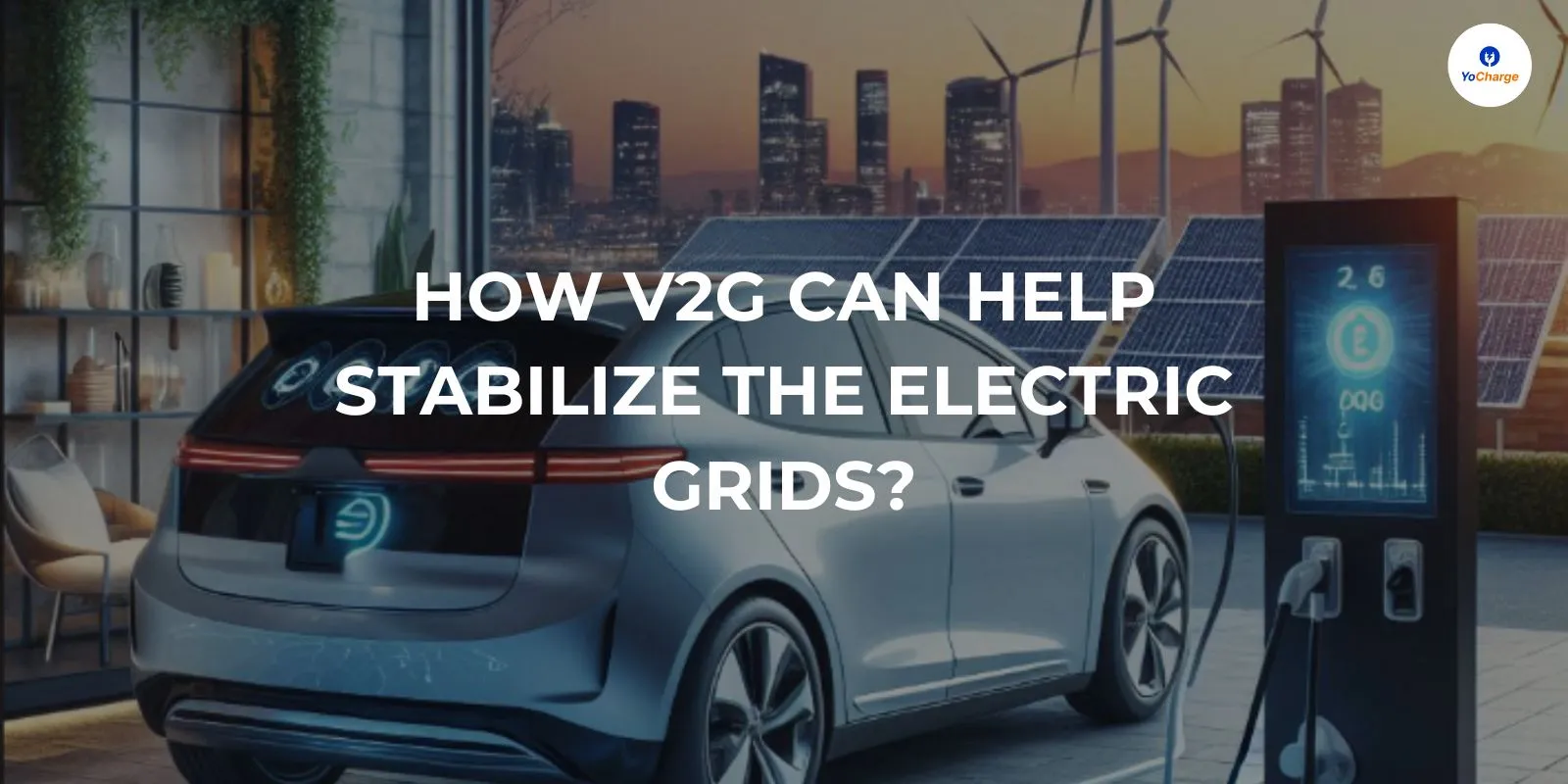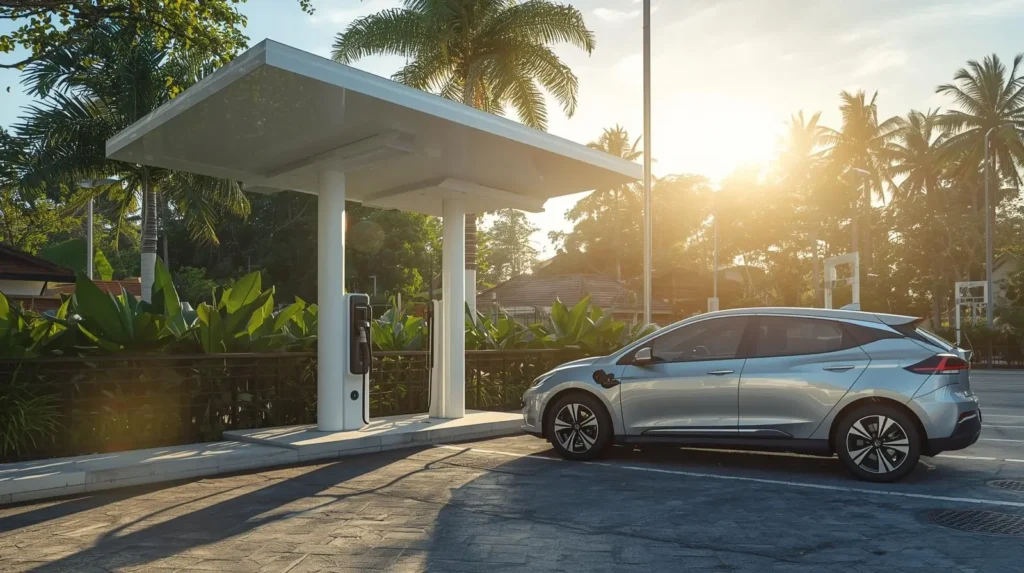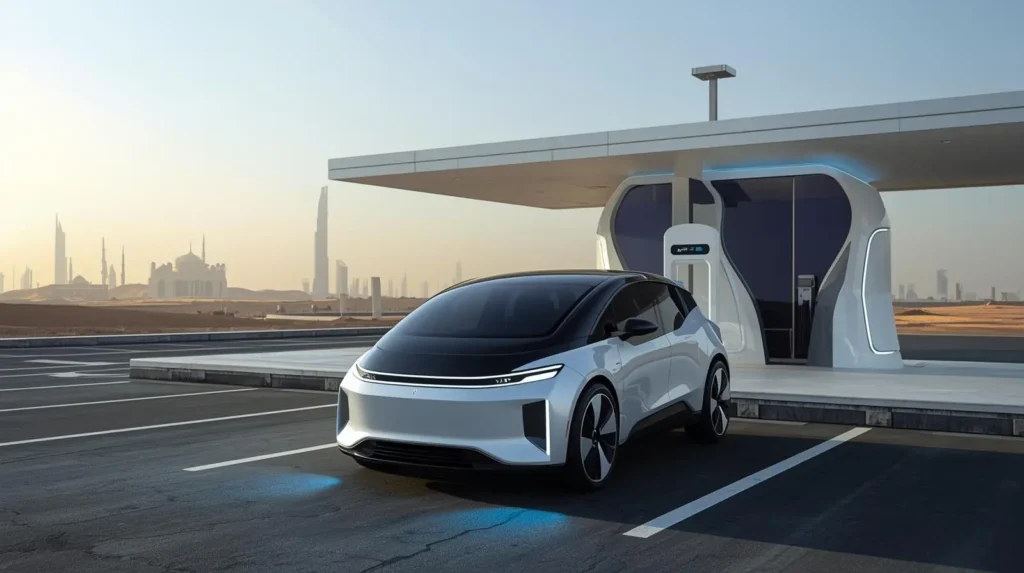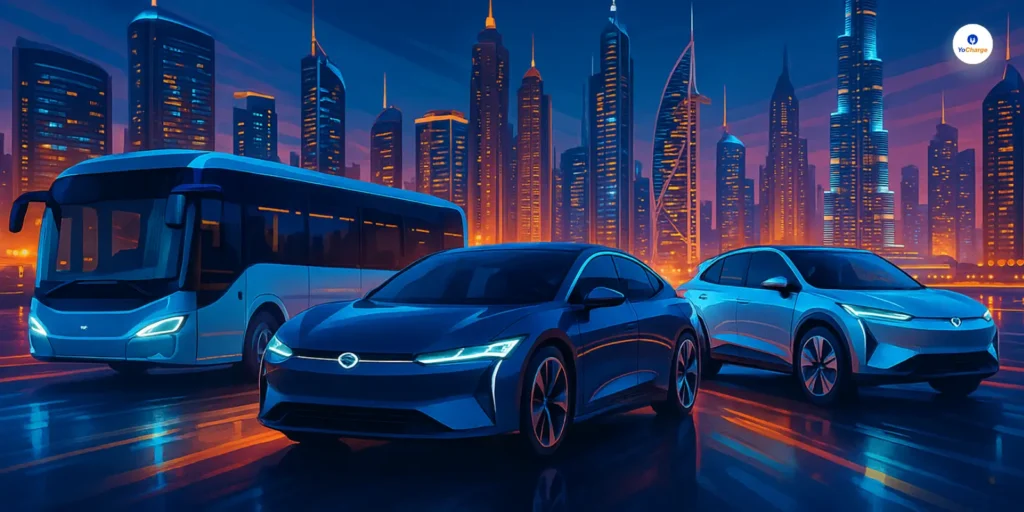
How V2G Can Help Stabilize the Electric Grids? As climate change and energy sustainability grow more urgent, the shift to electric vehicles (EVs) and renewable energy is essential. Today, renewable energy generates nearly 29% of global electricity. However, the rapid growth of renewable energy presents challenges, particularly in terms of grid stability.
Vehicle-to-grid (V2G) technology offers a solution by allowing EVs to not only charge but also send excess energy back to the grid. This helps stabilize power during periods of high demand or fluctuations in renewable energy.
V2G plays a crucial role in addressing current energy challenges. It strengthens grid resilience, optimizes energy use, and supports the transition to clean energy. This article will explore how V2G works, its benefits, and how it helps stabilize the electric grids, providing a clearer understanding of its importance in a sustainable energy future.
What is Vehicle-to-Grid (V2G) Technology?
Vehicle-to-grid (V2G) is a technology that enables electric vehicles (EVs) to return energy to the power grid. This process occurs through bidirectional charging stations, which send electricity from the EV’s battery to the grid when demand is high. V2G helps balance the electricity supply and reduces the effects of climate change.
Some benefits of V2G include:
- Storing Renewable Energy: EVs can store and return electricity from renewable sources like solar and wind.
- Peak LoadLeveling: V2G stores surplus energy and supplies it during periods of high demand.
- Cost-Effective Energy Storage: EV batteries provide a cost-effective method of storing energy without the need for additional equipment.
- Balancing Supply and Demand: V2G helps regulate the supply of electricity, reducing the risk of power outages.
- Reducing Reliance on Fossil Fuels: By storing renewable energy, V2G decreases the need for fossil fuels and contributes to lower carbon emissions.
How Does Vehicle-to-Grid (V2G) Technology Works?
V2G allows electric vehicles (EVs) to charge from the grid and send energy back to it when needed. This enables EVs to function as mobile energy storage units, supporting grid stability. Here is how V2G works:
- Charging From the Grid: When an EV is connected to a charging station, it draws electricity from the grid to charge its battery. This process involves a one-way flow of energy from the grid to the EV.
- V2G Capability: With V2G technology, EVs can reverse this flow. When the vehicle is not in use, it can return stored energy to the grid to help balance energy demand.
- Bidirectional Inverters: V2G-equipped EVs use bidirectional inverters to convert the direct current (DC) from the EV’s battery into alternating current (AC), which is the type of electricity used by the grid. These inverters control the two-way flow of electricity.
- Communication Protocols: V2G depends on communication between the EV, the charging station, and the grid. Advanced communication protocols allow the system to monitor grid demand and determine when to charge the EV or return energy to the grid.
How V2G Can Help Stabilize the Electric Grids?
V2G technology allows electric vehicles (EVs) to act as power sources, sending electricity back to the grid when needed. This helps stabilize the grid in several ways:
- Balancing Supply and Demand: EVs store extra electricity when there is a surplus. During peak demand, they return stored energy to the grid.
- Reducing Load Fluctuations: V2G helps stabilize the grid by providing backup power during sudden changes in demand.
- Improving Grid Resilience: EVs can supply power during outages, helping to reduce the impact of grid disruptions.
Simply put, EVs function like large batteries. When there is excess power, they store it. When there is a shortage, they release it, helping to keep the grid stable and reliable.
Challenges Facing Vehicle-to-Grid (V2G) Technology
While V2G offers promising benefits for grid stability, several challenges must be addressed:
- Battery Degradation: Frequent charging and discharging can lead to faster battery wear, reducing the lifespan of EV batteries. Effective battery management systems are required to minimize this impact and reassure users.
- Lack of Standardization: V2G technology lacks uniform communication standards, making it difficult for different EVs, chargers, and grid systems to work seamlessly together. Standardization is critical for smooth integration.
- Regulatory Issues: Clear regulations for V2G are still being developed. Without guidelines on tariffs, grid connections, and compensation for EV owners, large-scale adoption of V2G will face challenges.
- Infrastructure Investment: Widespread V2G adoption requires significant investments in bidirectional chargers. These chargers are not yet widely available, and expanding this network will demand considerable funding.
- Complex Grid Management: Managing energy from large numbers of EVs presents challenges for grid operators. Advanced systems will be needed to handle the increased complexity without negatively affecting grid stability.
Addressing these challenges is essential to fully realize the potential of V2G technology for grid stabilization.
Real-World Applications of V2G
V2G technology is already being used in practical situations. For example:
- Power Deficit in Germany: In June 2023, smart charging software drew power from over 4,500 idle EV batteries to provide electricity to 20,000 homes after a power plant failure.
- Coldplay Concert: In Amsterdam, around 150 stationary EVs were used to power a Coldplay concert.
- Renewable Energy Integration: V2G helps integrate renewable energy into the grid by storing surplus renewable energy and using it during periods of high demand, supporting the transition to a cleaner energy system.
The Final Words
Vehicle-to-grid (V2G) technology offers a promising way to make our electric grids more stable and efficient. By allowing electric vehicles to send energy back to the grid, we can balance supply and demand, reduce the risk of power outages, and make better use of renewable energy sources.
While there are challenges to overcome, such as battery wear, lack of standardization, and regulatory hurdles, real-world examples show that V2G is already making a positive impact. As more people adopt electric vehicles and renewable energy grows, V2G could play a key role in creating a more sustainable, reliable, and cleaner energy future for everyone.
You May Also Like: Everything You Need to Learn About Wireless EV Charging



